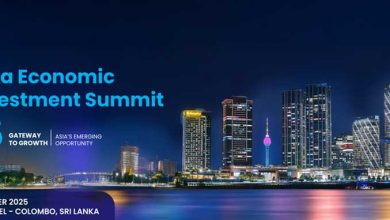LMDtv 5
 As the world is increasingly dependent on the digital economy for growth and development, Sri Lanka is looking to fall in line.
As the world is increasingly dependent on the digital economy for growth and development, Sri Lanka is looking to fall in line.
“The race for growth depends on the extent of digitisation – because the room to extract more economic growth is limited in a traditional sense in most economies,” the Chief Advisor to the President of Sri Lanka on the Digital Economy Dr. Hans Wijayasuriya asserted, during a recent LMDtv interview.
He explained the concept of the digital economy: “If you look at the core, it’s about information and communication technology (ICT) services, and equipment. In the next tier, there’s a slightly augmented definition, which includes pure digital service platforms such as ride hailing services and e-commerce.”
Wijayasuriya continued: “As economies progress in the direction of digitisation or digital transformation, you move from the score to the augmented. And then in the broadest sense, you begin to see digital technologies and raw materials, which include knowledge, data and other tools – such as cloud services and AI – pervading all industries and services.”
It’s at this stage that there is digital penetration into an economy.
The size of Sri Lanka’s digital economy relative to its economy is currently around three percent.
“The government aims to accelerate growth of the digital economy to be around 15 percent or more if we can generate the momentum. This target is highly ambitious and therein lies the challenge. But I believe that it is the most potent lever we have to extract growth,” he averred.
Since Sri Lanka is treading the path to economic recovery, it means the country is operating in a very tight fiscal space.
As Wijayasuriya noted, “the room to invest in growth in the traditional sense is fairly low because the headroom is limited. However, a digital drive and penetration of various economic sectors with relative digital efficiency doesn’t involve much investment; nor will it burden the fiscal space – and that’s where the magic is.”
He explained: “When driving a digital economy to a 5X leap in five years, it’s not about technology, which is probably the lowest component in terms of everything we need to do; and it’s also possibly the easiest because you can build systems, facilities and services.”
“What’s challenging is changing the mindset of people and businesses. It’s about transforming ways of working, adopting new methods, and having the curiosity and will to do things differently. Ultimately, it’s about change management,” Wijayasuriya added.
Capacity building is a key pillar of digitisation in Sri Lanka. Wijayasuriya elaborated: “It involves a holistic approach to building literacy, opening minds, and providing tools and training to a wide range of citizens and businesses.”
He added: “There is a gap in adoption but there are positives too. For instance, ride hailing has been adopted very well. Drivers and passengers have learned a new way of meeting each other. In my experience, I have immense faith in the ability of Sri Lankan citizens, micro-entrepreneurs and large enterprises, to adopt technology efficiently and use it productively.”
Wijayasuriya remains optimistic about Sri Lanka’s drive towards digital economic prosperity: “Tech providers must focus a lot on the experience that technology delivers.”
And he emphasised that simply building a system without paying attention to the citizen’s journey – and optimising that journey – isn’t the best way forward. Wijayasuriya observed that simplicity is effective: “Make it as simple as possible – if something can be done with two clicks, why must it be done with six clicks?”
He noted: “Design thinking is important in both the public and private sectors, and certainly among those in the game of digitising. If the design is good, I think our people will adopt it, and create business models for more and more innovation. That is the catalytic momentum that we require.”



